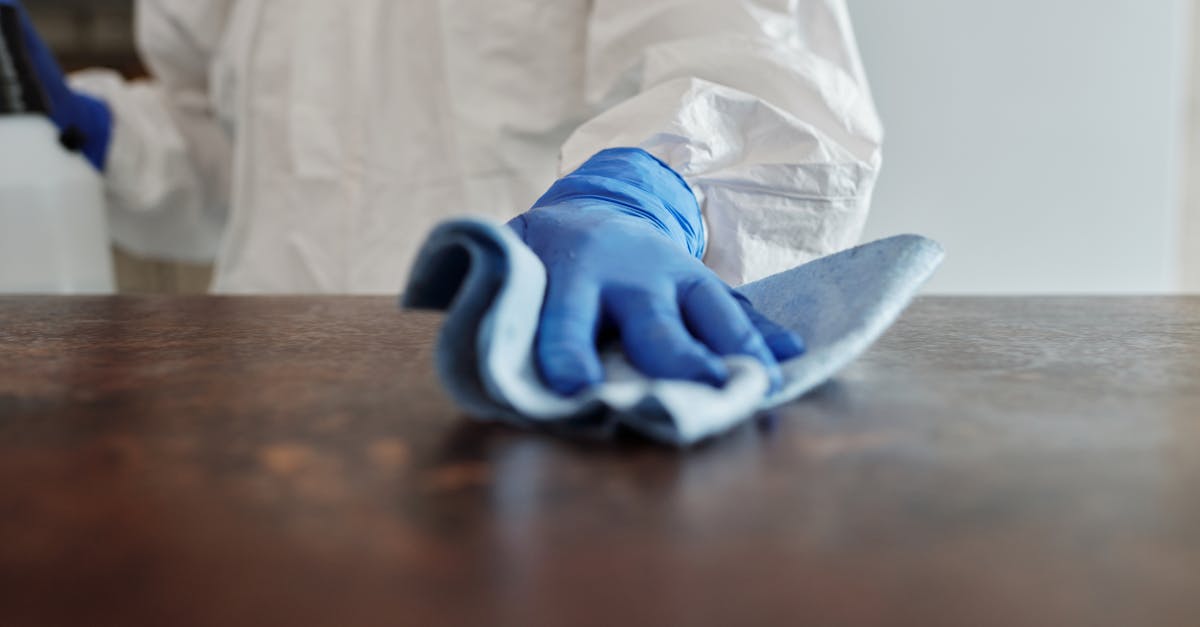Table Of Contents
Ensuring Proper Sanitization and Disinfection in HighTraffic Areas
Effective sanitization and disinfecting are crucial in high-traffic areas to minimize the spread of harmful pathogens. Sanitizing helps reduce the number of germs on surfaces to a safe level, while disinfecting aims to kill specific types of bacteria and viruses that can cause illnesses. In busy locations such as airports, shopping malls, and hospitals, regular and thorough cleaning practices play a significant role in creating a safe and hygienic environment for employees and visitors alike.
Frequent touchpoints like doorknobs, handrails, and elevator buttons are breeding grounds for bacteria and viruses in high-traffic areas. It is essential to implement a consistent cleaning schedule that includes both sanitizing and disinfecting to ensure all surfaces are properly treated. In addition to routine cleaning, promoting good hygiene practices among individuals frequenting these areas is equally important in preventing the spread of infections. Proper sanitization and disinfecting protocols not only protect the health and well-being of individuals but also contribute to creating a more sanitary and welcoming environment overall.
Tips for Maintaining Optimal Hygiene Standards
Maintaining optimal hygiene standards is essential for promoting a healthy environment and reducing the spread of harmful pathogens. Regular cleaning and disinfecting of high-touch surfaces such as doorknobs, light switches, and countertops can significantly minimize the risk of infections. It is crucial to use EPA-approved disinfectants and follow the recommended contact times to ensure effective disinfection.
Establishing a routine cleaning schedule that includes thorough disinfecting practices is key to upholding hygiene standards. Encouraging proper hand hygiene, providing easy access to hand sanitizers, and promoting respiratory etiquette can further aid in preventing the transmission of illnesses. By prioritizing cleanliness and implementing stringent disinfection protocols, individuals can collectively contribute to safeguarding public health and well-being.
How Regular Cleaning Practices Impact Health and Wellbeing
Regular cleaning practices have a significant impact on overall health and well-being by creating an environment that is free from harmful pathogens and germs. When surfaces are routinely sanitized and disinfected, the risk of spreading illnesses and infections is greatly reduced, especially in high-traffic areas where many individuals come into contact with shared surfaces. Proper disinfecting not only helps in preventing the transmission of diseases but also contributes to fostering a clean and hygienic setting that promotes well-being.
By incorporating regular cleaning routines that involve thorough sanitization and disinfection, individuals can experience improved health outcomes and less susceptibility to illnesses. When cleaning practices are neglected or not performed correctly, the accumulation of germs and bacteria on surfaces can lead to an increased likelihood of infections and health issues. Maintaining a clean environment through effective disinfecting procedures is essential for safeguarding health and well-being, particularly in spaces where many people gather and interact regularly.
Implementing Best Practices for Sanitizing and Disinfecting in Various Settings
Implementing best practices for sanitizing and disinfecting in various settings is crucial for maintaining a clean and healthy environment. While sanitizing reduces the number of germs on a surface to a safe level according to public health standards, disinfecting takes it a step further by killing a higher percentage of germs, including viruses and bacteria that can cause illnesses.
In different settings such as homes, offices, schools, and public spaces, it is important to properly sanitize and disinfect frequently touched surfaces like doorknobs, light switches, countertops, and electronics. By incorporating a routine cleaning schedule that includes both sanitizing and disinfecting, you can help prevent the spread of illnesses and promote a healthier environment for everyone.
Guidelines for Proper Disinfection in Healthcare Facilities
Proper disinfection protocols in healthcare facilities are essential in preventing the spread of harmful pathogens. Healthcare providers should follow guidelines set forth by regulatory agencies to ensure a safe environment for patients, staff, and visitors. Disinfecting high-touch surfaces such as doorknobs, handrails, and medical equipment regularly is crucial in reducing the risk of infections. It is imperative to use EPA-approved disinfectants and follow manufacturer instructions for effective disinfection.
Furthermore, maintaining a consistent cleaning schedule and ensuring thorough disinfection after each patient interaction are critical steps in upholding hygiene standards in healthcare settings. Proper hand hygiene practices among staff, along with the use of personal protective equipment, play a significant role in preventing cross-contamination. Implementing comprehensive disinfection strategies not only protects patients from healthcare-associated infections but also promotes a safe and healthy environment for all individuals within the facility.
FAQS
What is the difference between sanitizing and disinfecting?
Sanitizing reduces the number of germs on surfaces to a safe level determined by public health standards, while disinfecting kills nearly all germs on surfaces.
When should I sanitize and when should I disinfect?
Sanitize surfaces that come in contact with food, such as kitchen counters, while disinfect high-touch areas like doorknobs and light switches to prevent the spread of harmful germs.
What products should I use for sanitizing and disinfecting?
For sanitizing, use products labeled as sanitizers that are safe for food contact surfaces. For disinfecting, use EP
Is there a proper way to sanitize and disinfect surfaces?
Yes, follow the instructions on the product label for the correct contact time and dilution ratio. Make sure to clean the surface before sanitizing or disinfecting for optimal results.
How often should I sanitize and disinfect high-traffic areas?
High-traffic areas should be sanitized or disinfected frequently, especially during flu season or when there is an increased risk of illness transmission. Regular cleaning schedules can help maintain optimal hygiene standards.
Related Links
Disinfecting
What is an example of a disinfectant?
What is the meaning of sanitization?
